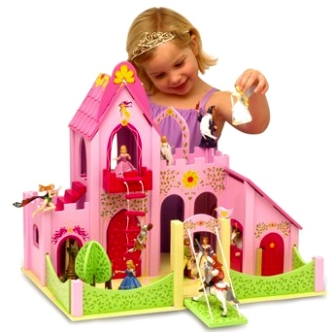With Christmas just around the corner the challenge of identifying that handful of special toys that the children in your life will delight in grows ever pressing. Perhaps it is with a modicum of dread that you will tentatively sidle into the department store and hunt out the aisles that are overflowing with yuletide stock designed to entice children and adults alike. Many will breathe a sigh of relief when they realise that the overwhelming choice has been handily whittled down by half into neat categories of ‘boys’ and ‘girls’. The pink dolls and ponies, cuddly pets and fairies for the little ladies; monster trucks, action figures and footies for the little men.
For a growing number of families however, this really rather arbitrary divide is not only unhelpful but one component in a daily challenge to live lives that are unencumbered by gender stereotypes and heteronormative assumptions. In constructing their families many same-sex attracted parents have to run counter to the socially constructed tides of gender and heteronormativity. In a world where many assume that heterosexual relationships form the basic building blocks of family, made whole by a caring mother and provider father, same-sex attracted parents have to navigate a path that deconstructs this assumption and allows for their children to live free of stigma and discrimination. Fundamental to this is the ability to eschew numerous aspects of the gendered world in which we live. Many modern parents subscribe to a similar ethos – increasingly it is understood that young girls can enjoy sports and grow up to be doctors or that boys can choose to be nurses or stay at home dads – but rarely are their lived experiences negatively affected by the subversive gender divide that is ubiquitous throughout society. Most would not give a second thought to the separation of toys in the department store.
The heteronormative world begins its gender distinctions before birth. “Is it a boy or a girl?” is the first question most women are asked when they announce that they are pregnant. And from there it is perpetuated in books, on television, at childcare, in schools. Wothout meaning to discriminate even the most enlightened adults are unlikely to buy pink clothes for their son or a toy tool-kit for their daughter. For same-sex parents and their families it becomes a battle to counter-act this. Having lived outside the heteronomative in their own relationships their children have to wrestle with the abandonment of gendered parenting on the one hand and the ever-present gendering that society throws at them on the other. At once this can be both detrimental to their health, if the rejection of gender leads to increased stigma, and positive for their wellbeing, as parents freed from the constraints of gender-based parenting can find roles that suit the whole family, building family harmony.
This is not all theoretical. As the Australian Study of Child Health in Same-Sex Families nears the end of its first chapter we have already seen how same-sex parent families excel in terms of family cohesion and how their children display excellent general health. We know that the stigma that these families encounter can be detrimental, and talking to both parents and children reveals their continual battles against heteronormativity and gender stereotyping. To what extent society can learn from this is as yet uncertain, but there are definitely lessons here that are worthy of hearing.
I have twin boys. They are four years old. When I go shopping this Christmas I will be seeking out toys that reflect their interests alone and won’t be swayed by the imposed gendering of department stores.
So that will be one red fire engine and a pink My Little Pony please!
By Dr Simon R Crouch
Lead Investigator, The Australian Study of Child Health in Same-Sex Families



There’s a piece on ‘The Conversation’ today titled “New insights into gendered brain wiring, or a perfect case study in neurosexism?”. Which is similarly thought provoking.
Pingback: A non-specific sex | Research Connect
Thanks for finally talking about >�Is it a boy or a girl?� | Research Connect <Liked it!